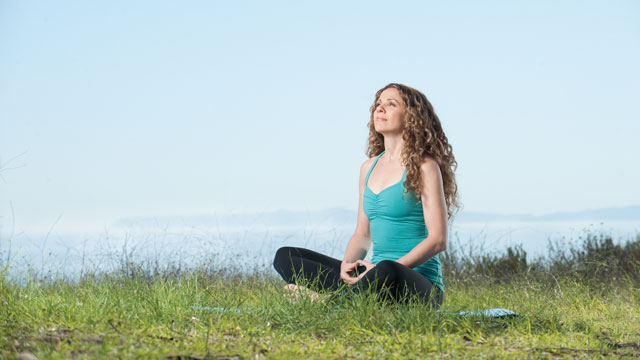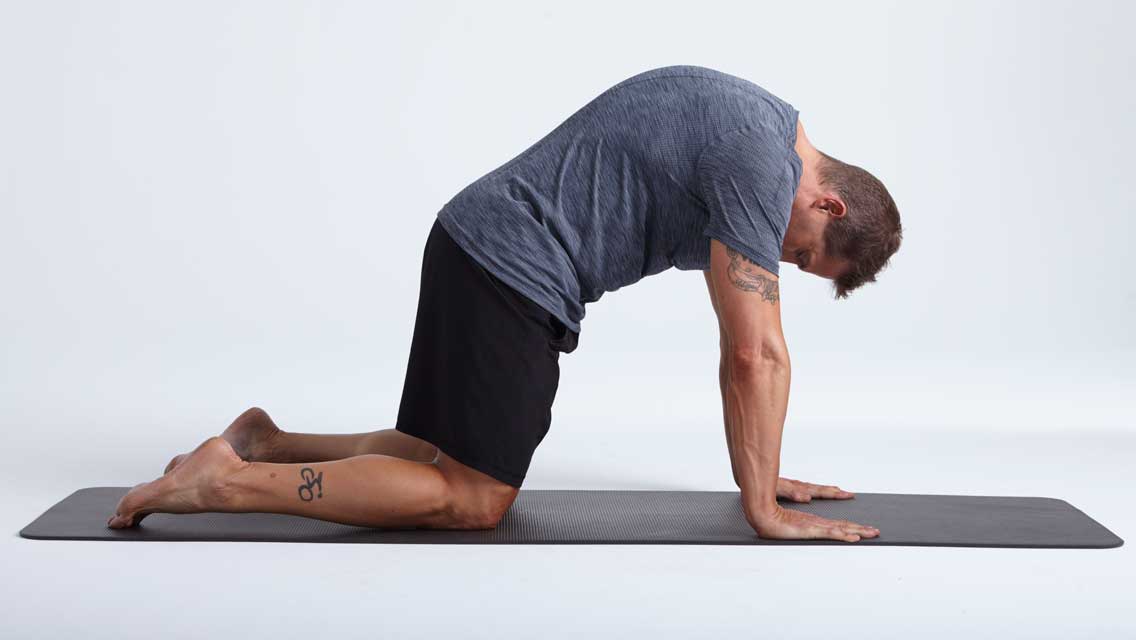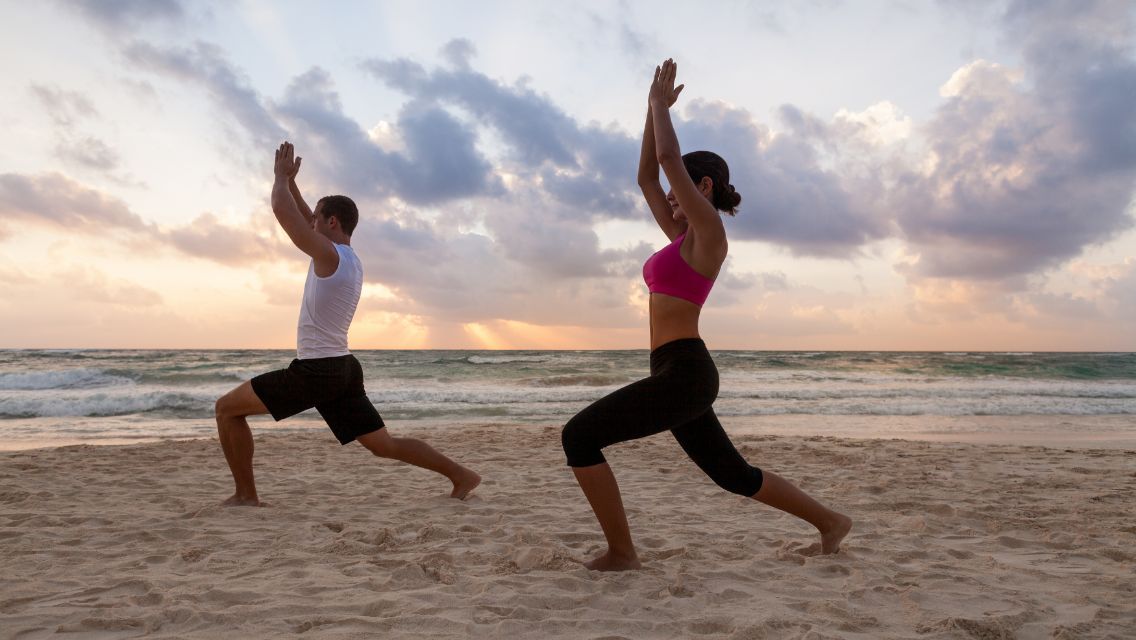Anyone can mimic the basic movements of a Sun Salutation, one of the keystone sequences in yoga. Standing, sweep your arms overhead, then swan dive into a forward bend, come halfway up with a flat back, fold forward again and rise back up to standing. But while it may look simple, the real trick comes from linking movement to breath.
We Western practitioners tend to hold our breath, rush it to keep up with the class, or ignore it entirely. But in doing so, we’re missing the magic.
Yoga, from the Sanskrit yuj, literally means to yoke or unite. While this definition from yoga’s Hindu roots hints at the larger spiritual goals of universal connection, it also points very specifically to the action of “yoking” movement to breath, which forms the basis of the physical, or asana, practice of yoga. Without this breath-movement relationship, you’re simply hoisting your arms up and down and bending at your waist.
“You vastly maximize the benefits of the pose by breathing correctly,” says renowned vinyasa yoga teacher Seane Corn. “Learning to breathe with clarity and regularity in yoga will transform it into a moving meditation.”
The Science of Breath
This potential to create a moving meditation is at the heart of yoga’s calm-inducing benefits. And it all comes back to the breath. Through conscious breathing (taking deep inhalations during specific movements and fully exhaling with others), you activate the parasympathetic nervous system (PNS) and trigger a corresponding drop in heart rate and suppression of stress hormones, like adrenaline and cortisol, in the bloodstream.
“We know that breathing has an influence on stress,” says Phillip Clifford, professor of anesthesiology and physiology at the Medical College of Wisconsin in Milwaukee. As the PNS kicks in, studies have found, all the systems of the body that go into high alert during times of stress are given permission to return to normal functioning. Furthermore, Clifford explains, when the breath deepens, the lungs expand, transmitting messages to the brain, which in turn tells the muscles it’s OK to relax.
Beyond inducing relaxation, yogic breathing can actually increase fitness. Studies have found that regular yoga practice with a strong focus on the breath leads to greater lung capacity, which is necessary for cardiovascular activities like running, biking, swimming and more.
Finally, when you focus on the breath, you tune out distractions. This can be a boon to athletes needing a focal point to reach a goal, or to anyone who wants to access the inner wisdom and confidence that’s available when we quiet the chatter of the mind. In fact, quieting the mind is a primary goal of traditional yoga.
“When I’m mindful of the breath, I’m not thinking about work, relationships, food,” says Corn. “I’m absolutely present.
What’s So Hard About Breathing?
For something that’s supposed to happen automatically, proper breathing can be surprisingly challenging. There are two reasons for this. In the heightened fight-or-flight response that occurs under stress, the body primes for action. Muscles tense, heart rate increases, and breathing is short and shallow. Breathing is also closely linked to emotion. When we feel anxious, stressed or overwhelmed, our natural response is to brace ourselves by shortening and holding our breath.
Breathing is, however, the best thing you can do to regain your equilibrium. “Simply breathing will change your experience completely,” Corn says.
Putting It Together
Practicing conscious breathing techniques in various positions effectively strengthens muscles, massages organs, engages the body’s many sphincters and sends neurological cues to the brain. And adjusting your posture or stance to make space to breathe can make all the difference. “When I finally took my first deep yogic breath, I surrendered,” says Corn. “It was one of the biggest revelations of my life.”
Learning how to connect the breath to movement isn’t difficult, but it takes practice. In the sequence at right, let the breath lead the movement through the poses, not the other way around. Once you master the rhythm, you can feel confident moving on to more challenging or vigorous sequences.
You’ll know you’re on the right track if the breath and movement start to entrain naturally. If you’re struggling to maintain a smooth, steady breath in a pose, try slowing down the pace. If you start to “check out,” one of the first things you’ll notice is the breath will no longer be in sync with the movement. It’s a built-in reminder to bring your attention back to the practice.
The Workout
Half Surya Namaskar A
(Half Sun Salutation A)
1. Start in Tadasana (Mountain Pose), arms resting at your sides.

2. Inhaling, raise your arms out to the sides and then overhead, tilting your head back and letting your gaze follow to create a slight backend.
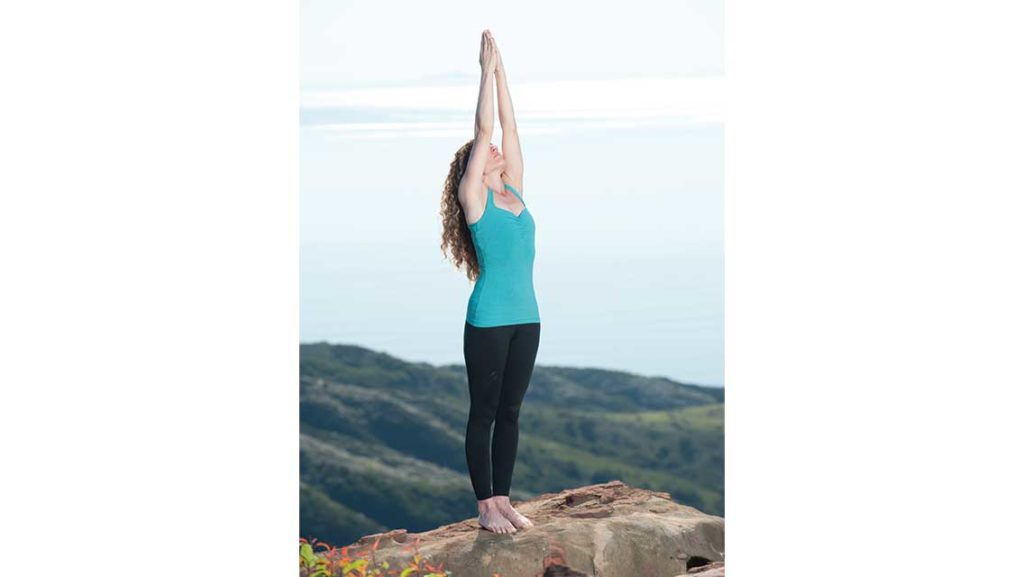
3. Exhaling, fold forward and touch your fingertips to the ground bending your knees if necessary.

4. Inhaling, raise halfway up, looking forward with the spine elongated, fingertips still on the ground or hands resting on your shines. Allow knees to bend if necessary.
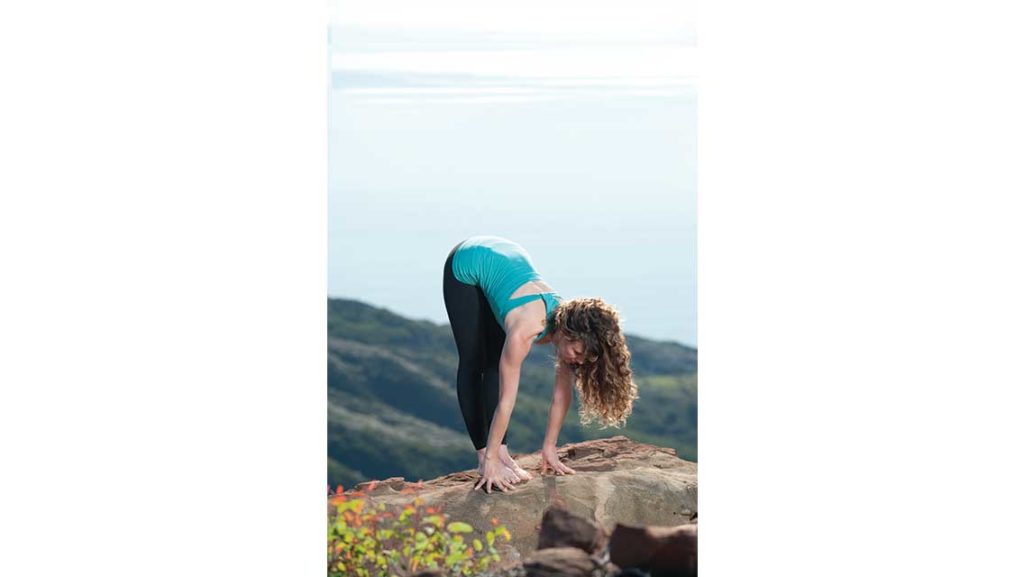
5. Exhaling, fold back over your legs, pressing your chest toward your knees.

6. Inhaling, return all the way to standing, raising arms out to sides until they meet overhead.
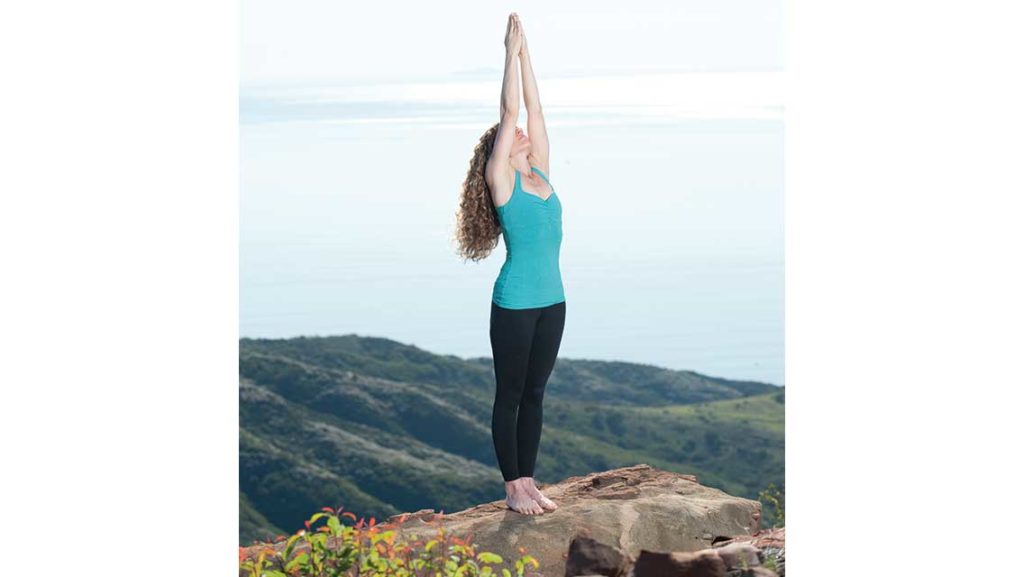
7. Exhaling, lower arms back down to sides and return to Tadasana.
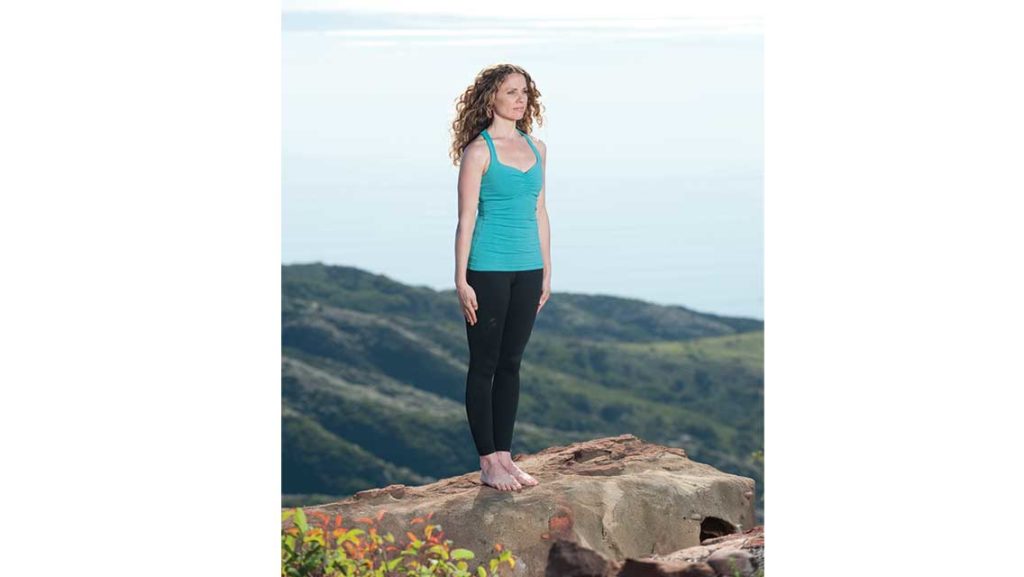
Breathing Lessons
Although it’s possible to muscle your way into even advanced yoga poses, doing so without linking the movements to the breath defeats the purpose of the practice, Corn explains. Learning basic techniques will evolve your practice in powerful ways.
The Regulator
Ujjayi breathing is a little tricky to master at first, but well worth the effort (watch Corn’s video demo for tips!). It can help lower stress, regulate your pace, and bring fresh, oxygenated blood to your tissues. With mouth closed, tilt your chin toward your chest. Place the tip of your tongue just behind your front teeth. Slowly inhale through the nose. Slightly constrict the throat valve you use to sigh heavily. With mouth still closed and valve constricted, exhale fully through the nose, resulting in a quiet oceanlike noise as your breath passes over your vocal chords. Inhale, maintaining the same slight constriction and creating a similar breath sound. Practice this for a few minutes, then try to maintain this breathing as you move through the sequence above.
The Cooler
Sitali breathing is called the Cooling Breath and can be used to cool down the body in hot weather and also to quiet the mind. It’s one of the few yogic breathing techniques in which you inhale through the mouth. Open the mouth and curl the tongue lengthwise. (If you can’t curl your tongue, which is a genetic trait, simply touch the tip of your tongue to the back of your top teeth.) Inhale through the mouth while slowly tipping the head back. Close the mouth, relax the tongue and exhale through the nose while you tip your head forward toward your chest. Continue this inhale-back, exhale-forward motion for five rounds. Bring your head to neutral and breathe naturally.
The Soother
This simple technique will have an immediate calming effect on the mind and body. Inhale through the nose, fully but naturally, hold the breath in for three to seven seconds, then exhale through the nose completely and hold the breath out for three to seven seconds. Do three to five rounds.

